Correctly identifying Aeonium canariense var. subplanum
Here in Australia there appears to be a great deal of confusion on the correct identification of the species: Aeonium canariense var. subplanum.
It is common to see an unknown hybrid incorrectly identified as this species, so we have created this post to compare and help distinguishing the two apart.
We believe the incorrectly identified plant to be an hybrid of unknown origins, which we will refer to as Aeonium hybrid. This is a commonly sold succulent and many collectors will be familiar with this plant and have it in their collection.
Lets start with the hybrid:
Aeonium hybrid
We believe this particular plant to be a hybrid but its parentage and origins remain uncertain at the point. We suspect however that Aeonium ciliatum is possibly part of the parentage.
Growing quite tall, this Aeonium will easily reach 60cm in height and develop a large central rosette up to 25cm in diameter with numerous side branches of smaller rosettes.
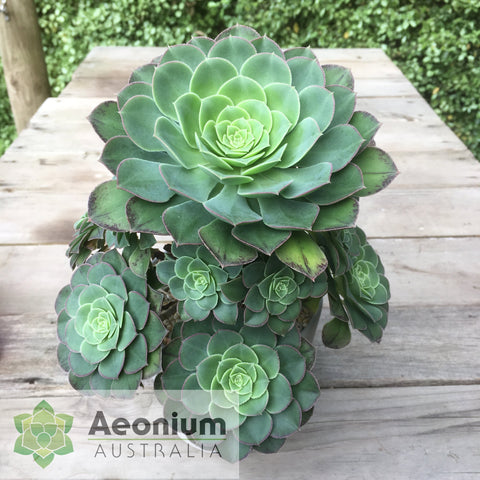
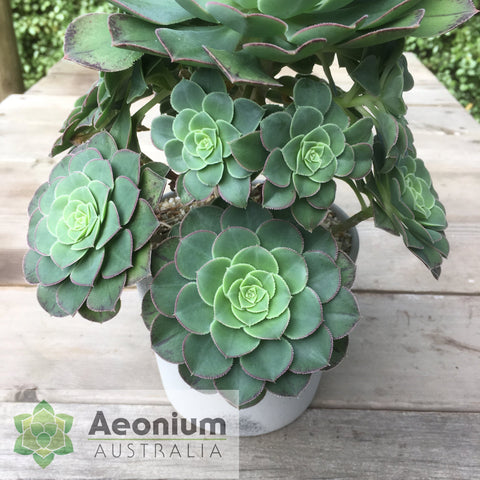
The foliage is a lovely emerald green colour and will commonly develop purple leaf margins.

The plants have a thick main stem up to 3cm in diameter with distinguishing leaf-scars where the old leaves have become detached. The stem is often a creamy white colour.

The leaf margins are also quite distinct having forward pointing teeth which are easily visible without the need of a lens.

Now the correct species to compare:
Aeonium canariense var. subplanum
Aeonium canariense var. subplanum is a beautiful species developing large velvety rosettes to 25cm wide.

The plants are only very low growing and the small amount of height obtained is usually from the rosettes themselves rather than from the short stems. The plants will develop a small number of offsets over time which branch from the base of the main rosette.
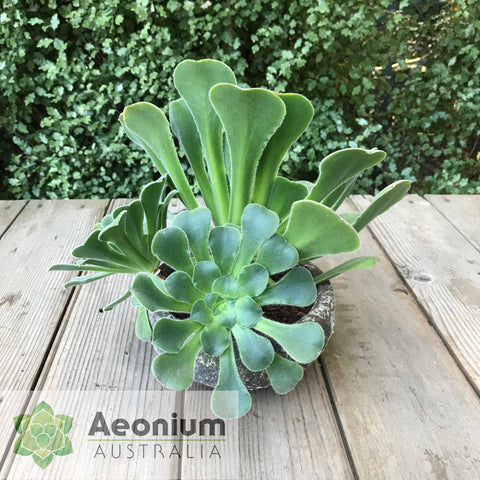
The leaves have a distinct spathulate shape (having a broad end) and is often slightly recurved at the tip.
When young and though out the growing season the rosettes are often very flat. Then as the plants mature and through out the summer months the rosettes develop into a cup or funnel shape.
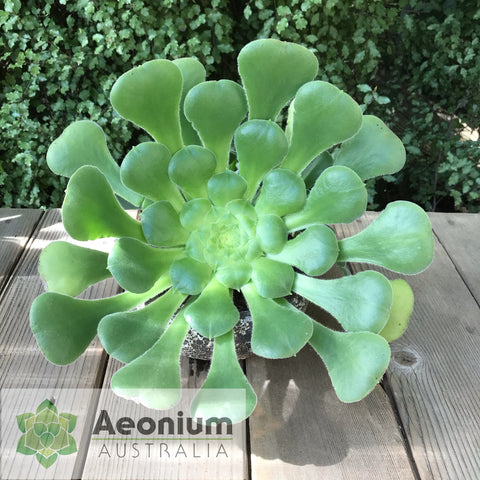
A distinguishing feature is the pubescent foliage which is due to hundreds of minute glandular hairs covering the leaf surfaces. This makes the leaves extremely soft giving them the feel of soft velvet.
Additionally the margins of the leaves have very thin cilia (hair like structures), as you can see in the photo below.
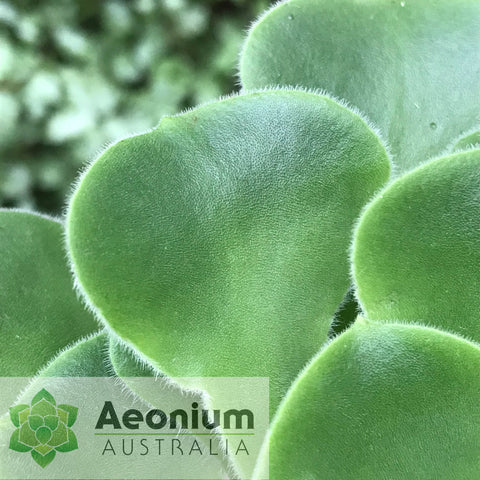
The key differences comparing the two:
- The true Aeonium canariense var. subplanum is very low growing having very short stems, has very distinct pubescent velvety leaves and leaf margins with fine thin hairs.
- The incorrectly identified hybrid is a very large growing plant (to 60cm high) which branches readily and develops a thick main stem with prominent leaf scars. The leaf margins have distinct forward facing teeth which are easily visible.
The two side by side:
Aeonium canariense var. subplanum (left) & Aeonium hybrid (right)

Thank you for reading and we hope this assists in correctly identifying the true Aeonium canariense var. subplanum. Both are very beautiful plants and are well deserved in any succulent collection.
For further photo's, information or sales please follow the links below:
Aeonium canariense var. subplanum
For more detailed information please visit the International Crassulaceae Network. This is a great resource dedicated to the identification of succulents.
International Crassulaceae Network
